OnePlus had a strong 2024 on the back of the OnePlus 12 and 12R, and it is looking to emulate a similar success this year. The OnePlus 13 introduces a bold new design, better cameras, and a larger battery — all while being thinner than last year’s phone. The software is also much better this time around, and although you don’t get a clean interface, it is fluid and doesn’t have many bugs.
I really like the OnePlus 13, and think it has the potential to be one of the best phones of 2025. That said, the phone is costlier by $100, edging it ever closer to what Google and Samsung charge. If you don’t want to shell out that much cash, there’s an alternative — the OnePlus 13R.
Just like last year, the OnePlus 13R is launching globally, and that’s absolutely the right call — there’s obviously a lot of interest in the device outside India and China. Also, the OnePlus 12R continues to be the best mid-range phone you can buy, and the 13R builds on that foundation, delivering increased performance by way of the Snapdragon 8 Gen 3, and a bigger 6,000mAh battery.
OnePlus is making considerable changes to the imaging as well, with the phone featuring a new 50MP main camera and a dedicated 50MP telephoto with 2x optical zoom. With these upgrades comes a price hike, and the OnePlus 13R costs $100 more as a result in North America and the U.K. Thankfully, Indian buyers don’t need to worry about paying more, as the device costs the same as the 12R a year ago.
Does the OnePlus 13R do enough to retain its mantle as the best value flagship? I used the phone as my daily driver for two weeks, and here’s what I think.
OnePlus 13R: Pricing and retail availability
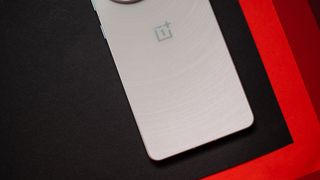
The OnePlus 13R was unveiled on January 10, 2025, and the phone is now available to buy in India, the U.S., U.K., and select global markets. Like last year, OnePlus is selling the phone in 256GB and 512GB storage variants, but North American buyers will just get the 256GB model.
Thankfully, the base model comes with 12GB of RAM and 256GB storage, and it gets UFS 4.0 storage as standard — unlike last year. This model costs $599 in the U.S., £599 in the U.K., and ₹42,999 ($501) in India. The 16GB/512GB variant is debuting at ₹49,999 ($582) in India, and you get the usual launch incentives.
While the device costs more in the U.S. and U.K., that isn’t the case in India; OnePlus tends to be aggressive in the country in this category, and I think it is a good value considering the hardware you’re getting.
OnePlus 13R: Design
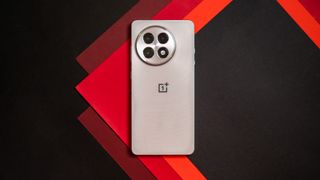
Like every other phone launching these days, the OnePlus 13R switches to a flat aesthetic with boxy sides. While the OnePlus 13 also has a similar design, that phone has beveled edges that make it comfortable to hold and use. You don’t get the same on the 13R, and it doesn’t have anywhere close to the same in-hand feel.
The sides tend to dig into your palm, and while it is technically lighter than the OnePlus 13, it doesn’t feel that way when holding both phones. It’s thinner as well at 8mm, but the boxier sides minimize that effect — I like the in-hand feel of the 12R much better to this year.

That said, the design at the back highly interesting; the Astral Trail model has a set of rings etched into the glass that looks cool, and the camera housing has a cleaner design than previous years. The mid-frame uses aluminum, and there’s a clear difference in the sturdiness of the device over the 12R.

If you need a matte texture, the 13R is also available in a Nebula Noir color variant, but that model doesn’t quite have the same striking design at the back. The alert slider is intact, and it easily allows you to switch between ring, vibrate, and silent profiles without too much of a hassle.

While the slider continues to be a differentiator, I don’t like the OxygenOS 15 bundles calls and notifications into a single category in Do Not Disturb; if you enable DND but want calls to come through (as I do), there’s no way to set it up. Every other manufacturer has calls and messages split into different categories, and that needs to be the case in OxygenOS as well.

Although the OnePlus 13 gets a new ultrasonic fingerprint module, the 13R has an optical unit instead, and it is positioned too low on the screen, making it awkward to access when holding the phone one-handed. The module was higher up than usual last year, and that made it uncomfortable as well, and OnePlus course-corrected too much this time, putting it too low on the panel — now we’ll need to wait and see if next year’s phone has it in the goldilocks zone.

You get IP65 dust and water resistance, and while that is decent enough in its own right, it isn’t quite as effective as IP68 or IP67 that’s used by a few manufacturers in this category. While there are a few quibbles with the design, the OnePlus 13R looks better than last year, and more importantly, it is more durable.
OnePlus 13R: Display
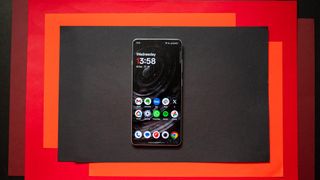
OnePlus retained the same 6.78-inch AMOLED panel as last year, but it is flat this time; it goes up to 120Hz and has a maximum brightness of 1600 nits in HBM. There’s Dolby Vision and HDR10+, and interestingly, the panel is protected by Corning’s new Gorilla Glass 7i, which has increased scratch resistance.
As you get the same BOE panel, I didn’t see any issues with color vibrancy or contrast levels. The panel gets bright enough in daily use, and even under harsh sunlight, I didn’t notice any problems. It doesn’t get quite as bright as the Pixel 9 Pro or Vivo X200 Pro, but you’ll only notice the difference when using the 13R next to these devices.

You get a decent amount of customizability with the panel when it comes to adjusting color balance, and OxygenOS has the best always-on styles you can get on any phone, with unique options that allow you to tailor the lock screen to your tastes. And just like the OnePlus 13, you get Aqua Touch on the 13R, which gives you the ability to use the phone when there’s water on the screen.
Gaming is similarly enjoyable, and while you don’t get 120fps on the device, it does an admirable job at 60fps with most titles. The one positive is that BGMI goes up to 120fps using frame interpolation, but it has jitter at times. Stereo sound is detailed enough that you can use the onboard audio for casual gaming, but I recommend using earbuds if you’re listening to music — the OnePlus Buds 3 continue to be a terrific choice in this regard.
OnePlus 13R: Performance
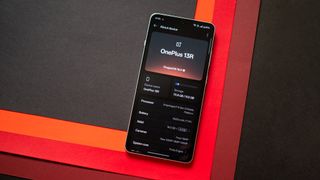
OnePlus messed up with the storage variants last year, incorrectly stating that the 256GB version had UFS 4.0 storage. It’s addressing those shortcomings with the 13R, with the phone now offering 256GB of UFS 4.0 storage on the base model. Indian buyers also get a 512GB model, and this variant also gets UFS 4.0 storage.
There’s good news on the hardware side as well, with the phone powered by Snapdragon 8 Gen 3. It is just as capable as last year, and continues to deliver outstanding performance — I’m yet to see any games challenge the chipset. There is thermal throttling after the 30-minute mark, but the phone has a higher threshold than the regular OnePlus 13; I noticed it going up to 47 degrees in extended testing, whereas the OnePlus 13 didn’t go beyond 42.2 degrees.
| Category | OnePlus 13R | iQOO 13 |
|---|---|---|
| PCMark Work 3.0 (Overall) | 12459 | 16043 |
| PCMark Work 3.0 (Web Browsing) | 11255 | 16307 |
| PCMark Work 3.0 (Video Editing) | 6196 | 6899 |
| PCMark Work 3.0 (Writing) | 12693 | 20445 |
| PCMark Work 3.0 (Photo Editing) | 23998 | 39044 |
| Geekbench 6 (single-core) | 2093 | 2954 |
| Geekbench 6 (multi-core) | 6246 | 6650 |
| Geekbench AI (Quantized Score) | 3041 | 3915 |
| 3DMark Wild Life Extreme (score) | 4550 | 4514 |
| 3DMark Wild Life Extreme (FPS) | 27.25 | 27.025 |
| 3DMark Solar Bay (score) | 8075 | 7287 |
| 3DMark Solar Bay (FPS) | 30.71 | 27.695 |
I didn’t encounter any lag or slowdowns in the two weeks I used the phone, and it held its own in demanding games as well. Annoyingly, there’s no eSIM connectivity on the phone, but you get OnePlus’s new BeaconLink standard that builds on Bluetooth, delivering increased range of up to 100 ft.
The rationale for not including eSIM is that it doesn’t get much use in countries like India — where the phone will see a bulk of its sales — but the manufacturer is betting on BeaconLink as a new standard that has potential, so it’s included instead. Thankfully, the phone doesn’t miss out in other areas, and you get a good Wi-Fi 7 modem, Bluetooth 5.4, AptX HD, LHDC, NFC, and dual-band GPS. This is easily one of the best hardware packages you’ll find in the sub-$700 category, and barring the omission of eSIM, there isn’t anything to fault.
OnePlus 13R: Battery life
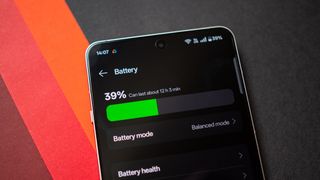
I easily got a day and a half out of the OnePlus 12R’s battery, and the 13R manages to last two days thanks to a bigger 6000mAh battery. Even with heavy use, the phone managed to last over a day and a half, and I averaged two days in regular use. This is the case on other devices I tested recently that had 6000mAh batteries as well, and I’m excited that we’re at a point where you no longer need to charge your phone daily.
Unlike the OnePlus 13, the 13R doesn’t have silicon-carbon tech, and instead uses a single 6000mAh cell. As it no longer uses dual cells, it takes considerably longer to charge the device. In my testing, the phone took just over 55 minutes to charge using the bundled 80W charger — 17 minutes more than the OnePlus 13.
Obviously, the charging time isn’t ideal, but it is still better than what you get with Samsung and Google phones, and there’s a charger bundled in the package. The downside with the phone is that you don’t get wireless charging, but seeing as how I don’t use it at all, it isn’t as big a limitation.
OnePlus 13R: Cameras
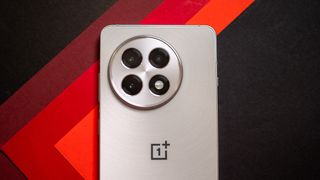
OnePlus is using a 50MP Sony LYT-700 imaging sensor as the main camera on the 13R, and it’s joined by a 50MP Samsung JN5 telephoto lens with 2x optical zoom and an 8MP wide-angle lens that uses Sony’s IMX355 module. The tele lens is limited in its usability as a 3x sensor would have been much better, and in a similar vein, the wide-angle lens needs a better sensor.
The camera interface itself is identical to last year, but you get a ton of new AI-assisted editing features that do a good job. Just like the regular OnePlus 13, all three modules at the back can shoot 4K60 video, but the video quality itself isn’t as good. The phone does a better job shooting photos of moving objects, and you can take live photos that retain motion even when you move the images over to iOS.
Although you don’t get any Hasselblad tuning, the OnePlus 13R delivers photos that look similar to the OnePlus 13, which was the case last year as well. The wide-angle lens doesn’t quite manage to deliver the same vibrancy of photos, and again, this was something the 12R struggled with. The resultant images are decent enough, but you don’t get the same detail, and there’s visible noise in low-light situations.
Shots taken in daylight have good colors and detail, but they have higher levels of contrast, and foliage rendition isn’t as natural. That said, the resultant shots look great in their own right, and there isn’t that big a difference in this scenario.
It’s in low-light conditions where the OnePlus 13R struggles to hold against the standard model. It boosts the exposure to eke out additional detail, and in doing so you get colors that look washed out at times, visible grain, and aggressive smoothing at the edges.
That said, the phone does a good enough job if there’s some artificial lighting.
On the whole, the device manages to deliver one of the best cameras in its category. It’s a letdown that the auxiliary modules aren’t quite as good, but other than that, this is a great showing. Unless you need the additional versatility that you get with the 3x lens on the OnePlus 13, this is a good enough choice if you’re looking to save some cash.
OnePlus 13R: Software

Software has been a point of contention for OnePlus in the last three years, but the OnePlus 13R doesn’t have any shortcomings in this area. The device runs OxygenOS 15 based on Android 15 out of the box, and it is just as fluid as the OnePlus 13 — and has the same feature-set.
There’s a sprinkling of AI thrown in for good measure this time, but as is always the case with these things, the usability is dubious. Like most other manufacturers, OnePlus is using a mix of on-device LLMs and cloud servers, and there’s a dedicated section in the settings that lets you see all the features available.
The interface is fast and doesn’t have any slowdowns or bugs, and it’s refreshing to be able to say that about a new version of OxygenOS. There’s good customizability (as always), and the latest iteration of the software brings a slew of lock screen styling options, and they look great.
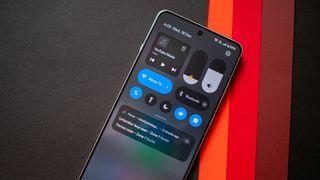
Outside of that, I don’t really have much to point out. I didn’t see any issues with notifications or aggressive battery management, and the device does a great job with the basics. The only quibble is that the UI is heavily customized, but that’s the case with most phones other than Pixels, and if anything, I prefer OxygenOS to MIUI.
Coming to updates, the device will get four years of software updates and six years of security updates. OnePlus basically made it clear last year that this would be the maximum it would offer on its devices, and while it isn’t on the same level as Google and Samsung, it’s still decent enough.
OnePlus 13R: The competition
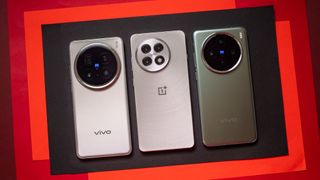
What’s so good about the OnePlus 13R is that it is positioned in a segment where you don’t have many devices. I like what Vivo is doing with the V series, and the V40 Pro has the best cameras in this category, and the sleek design is a differentiator as well. That said, it isn’t anywhere as fast as the 13R, nor does the battery last as long.
The Reno 13 Pro is a good choice to consider as well, with the device touting great cameras and a long-lasting battery. It doesn’t quite have the same power, but that’s about the only limitation, and it is quite similar to the 13R in regular use.
OnePlus 13R: Should you buy it?

You should buy this if:
- You need a mid-range phone with the best hardware
- You want a phone that lasts two days between charges
- You need a great camera
- You want fluid software
You shouldn’t buy this if:
- You need great auxiliary cameras
- You want a watertight design
I called the OnePlus 12R the bargain of the year in 2024, and if anything, the OnePlus 13R does more to deserve that title this year. The phone delivers better performance, has a bigger battery, double the amount of storage, takes better photos in challenging situations, and will get more software updates. You’re paying the same as last year’s model while getting a decent set of upgrades, and I call that a win.
The cameras are among the best in its category, and OnePlus nailed the software as well this time, rolling out plenty of AI features you’ll actually end up using. Just like the standard OnePlus 13, there isn’t anything inherently wrong with the 13R, and the only limitation I’ve come across is that the auxiliary cameras aren’t on the same level as the main sensor. Outside of that and IP68 water resistance, you don’t have anything missing here.
If anything, I’d suggest getting the OnePlus 13R instead of the OnePlus 13 if you don’t need the absolute best cameras. There really isn’t any other device that offers quite the same caliber of hardware in this category, and for the second year in a row, OnePlus managed to deliver the best value flagship.

